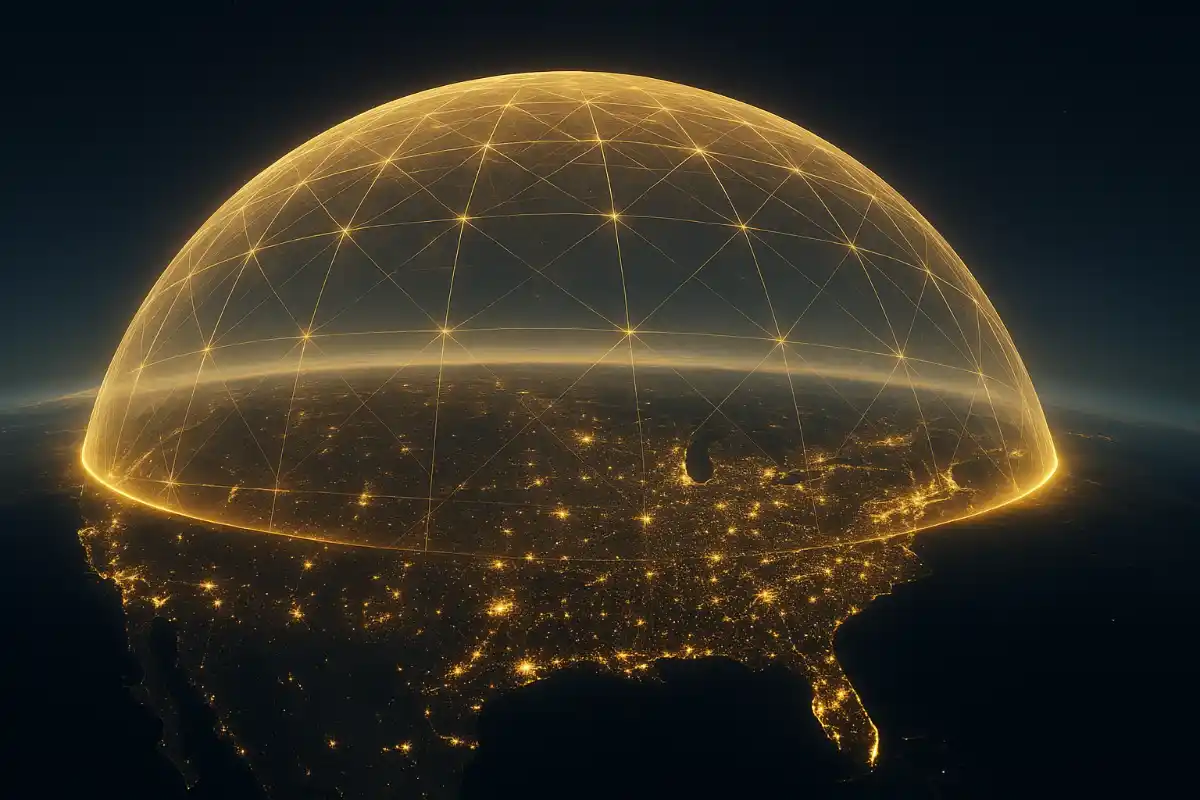| Summary |
|
The race for control of Earth’s orbit is accelerating as the United States, Russia, and China expand military activity in space. Russia and China have been testing close-proximity maneuvers that mimic attack formations, while the US is developing a new space-based defense system known as the Golden Dome. The shift signals growing tension in low-Earth orbit, where satellites are becoming both strategic assets and potential targets.
In recent months, US officials have tracked several Russian satellites performing complex proximity operations, a move viewed as preparation for offensive and defensive actions in orbit. These tests involve one satellite shadowing another at close range, capable of jamming signals or altering a target’s course.
In early 2025, the US Space Command confirmed that multiple Russian spacecraft circled a target satellite at altitudes near 300 miles, using short thruster bursts to maintain position.
The same pattern appeared in 2024 when Russia’s Cosmos 2576 followed a US imaging satellite along a shared orbital path. Though no collisions occurred, these rehearsals build the precision skills needed for space combat. Analysts say they demonstrate how Russia is training to disable or disrupt rival satellites without open conflict.
China is following a similar path. Its Shiyan and Shijian satellites have been conducting synchronized maneuvers in low-Earth orbit that US officials describe as simulated dogfights.
In 2024, three Shiyan-24C and two Shijian-6 satellites performed complex rendezvous maneuvers, coming within meters of each other in coordinated tests. The exercises reportedly involved grappling arms and laser systems being studied for anti-satellite roles.
China’s satellite fleet has grown rapidly, with more than 1,000 active satellites in orbit, second only to the US. The country launched 66 rockets in 2024, many carrying surveillance payloads and prototype space-defense systems. The Pentagon has also raised concerns about Chinese work on directed-energy weapons designed to disable satellites by overheating their sensors.
In response, the US is building the Golden Dome, a space-based missile and satellite defense system announced by President Trump in May 2025. With a $175 billion budget, it combines space-based sensors and interceptors capable of tracking and neutralizing intercontinental missiles and hypersonic weapons from orbit. The system is being managed by Space Force General Michael Guetlein, who said the goal is to provide global coverage using a constellation of hundreds of satellites.
Initial trials in Alaska have shown progress in detecting mock missile launches. SpaceX is reportedly among the contractors being considered to help deploy the Golden Dome network, given its experience managing large constellations through Starlink. Full deployment could take a decade, but early prototypes are already being tested in classified programs.
Critics warn that the Golden Dome could accelerate the weaponization of space, breaking long-standing norms established by the 1967 Outer Space Treaty, which designates space for peaceful use. China has already condemned the plan, calling it a threat to international stability. Analysts fear the system could push other nations to expand their own offensive programs.
Astronomers are also worried about the growing number of satellites and debris that threaten visibility from Earth. Past anti-satellite tests, such as China’s 2007 strike that produced more than 3,000 debris fragments, have already made some orbital regions dangerous. Russia’s 2021 test added 1,500 more pieces, many still in orbit today.
Debris clouds can reflect sunlight and disrupt astronomical observations. Large constellations like Starlink already interfere with deep-sky imaging, and the addition of weaponized systems could make the problem worse. Missions such as the European Space Agency’s Euclid telescope rely on clear skies to map billions of galaxies. Increasing orbital clutter could limit the data they collect.
Scientists warn that continued satellite conflicts could trigger the Kessler syndrome, a chain reaction of collisions that renders parts of orbit unusable for decades. The UN has called for a moratorium on debris-generating tests, but enforcement remains weak. With new systems like Golden Dome and rival nations stepping up military drills, the race for orbital dominance is tightening.
For now, astronomers and defense experts agree on one point: if diplomacy fails to catch up with technology, the next frontier of conflict may be fought above our heads.

